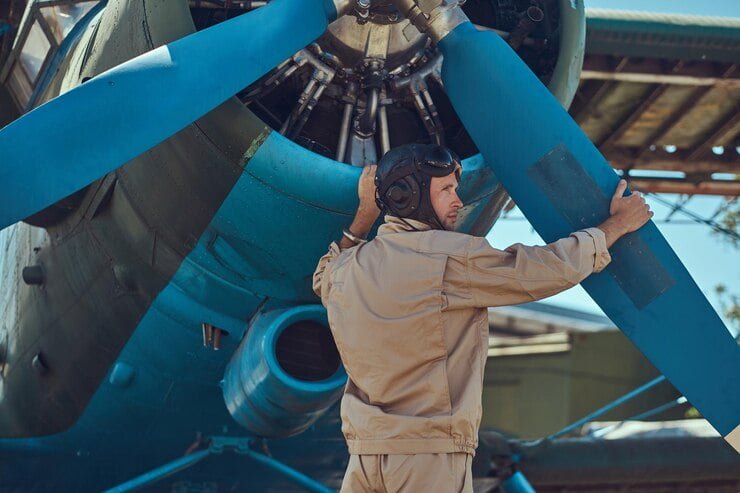In the ever-evolving field of military aviation, the need for robust, reliable, and interoperable communication systems is paramount. These systems ensure seamless coordination, efficient data transfer, and secure communications across various platforms and operations.
The ARINC 300 standard plays a crucial role in fulfilling these requirements. Originally developed for commercial aviation, ARINC 300 has found significant applications in military aviation, enhancing the efficiency and safety of military operations.
This article delves into the history, importance, applications, and future trends of ARINC 300 in the context of military aviation, highlighting its vital role in modern defense strategies.
Importance of ARINC 300 in Military Aviation
In military aviation, the importance of ARINC 300 cannot be overstated. The standard significantly enhances communication systems, ensuring that data is transmitted accurately and securely between different aircraft and ground control stations. This is vital for mission success, as reliable communication is the backbone of military operations.
ARINC 300 improves interoperability between various aircraft and systems, a critical factor in joint and coalition operations. Military forces often operate a diverse fleet of aircraft, including fighters, bombers, transport planes, and reconnaissance aircraft.
The standardized communication protocols provided by ARINC 300 ensure that these diverse platforms can communicate and coordinate effectively, thereby enhancing operational efficiency and effectiveness.
Moreover, ARINC 300 ensures the reliability and robustness of communication systems in harsh environments. Military aircraft frequently operate in extreme conditions, including high altitudes, severe weather, and combat zones. The durability and resilience of systems based on ARINC 300 standards are essential for maintaining operational capability under these conditions.
Applications of ARINC 300 in Military Aviation
Avionics Integration in Fighter Jets and Bombers
In modern fighter jets and bombers, advanced avionics systems are essential for mission success. These systems include radar, navigation, targeting, and communication systems, all of which need to work seamlessly together.
ARINC 300 provides the necessary specifications to ensure that these components can communicate effectively, allowing pilots to receive real-time data and make informed decisions.
This integration enhances situational awareness, improves targeting accuracy, and ensures effective coordination with other aircraft and ground forces.
Military Transport and Reconnaissance Aircraft
Military transport and reconnaissance aircraft also benefit significantly from ARINC 300 standards. These aircraft are often equipped with a wide array of sensors and communication devices that need to transmit large volumes of data to ground stations and other aircraft.
ARINC 300 ensures that this data transfer is reliable and secure, enabling efficient logistics operations and effective intelligence gathering.
For reconnaissance missions, the ability to transmit high-resolution imagery and sensor data in real time is crucial for timely decision-making and mission success.
Role in Unmanned Aerial Vehicles (UAVs) and Drones
The use of unmanned aerial vehicles (UAVs) and drones in military operations has increased significantly in recent years. These platforms rely heavily on robust communication systems to transmit data and receive commands from remote operators.
ARINC 300 provides the necessary framework to ensure reliable communication between UAVs and ground control stations, enabling precise control and real-time data transmission. This is particularly important for surveillance and reconnaissance missions, where the timely delivery of data can be critical.
Implementation in Command and Control Systems
Command and control systems are the nerve centers of military operations, coordinating activities and ensuring effective communication between different units.
ARINC 300 standards are integral to these systems, providing the necessary specifications for integrating various communication and data systems. This integration ensures that commanders have access to accurate, real-time information, enabling them to make informed decisions and coordinate complex operations effectively.
Challenges and Solutions
Technical Challenges
Implementing ARINC 300 in military applications is not without challenges. One significant challenge is the integration of ARINC 300 with legacy systems. Many military aircraft still use older communication standards, and ensuring compatibility can be complex.
Additionally, the high-security requirements of military operations necessitate robust encryption and cybersecurity measures, which can complicate the implementation process.
Solutions and Best Practices
To overcome these challenges, military organizations can adopt several best practices. These include conducting thorough compatibility assessments before integration, investing in advanced encryption technologies, and ensuring rigorous testing and validation of ARINC 300-based systems.
Additionally, ongoing training and certification programs for personnel can help ensure that the implementation process is smooth and effective.
Future-Proofing Military Systems
As technology continues to evolve, future-proofing military systems is essential. ARINC 300 standards provide a flexible and scalable framework that can accommodate emerging technologies.
By continuously updating and refining ARINC 300 specifications, military organizations can ensure that their communication systems remain relevant and effective in the face of evolving threats and technological advancements.
The Future Role of ARINC 300 in Military Aviation
Looking ahead, ARINC 300 will continue to play a critical role in military aviation. Its ability to provide reliable, interoperable, and secure communication systems makes it an essential component of modern military operations.
As new technologies emerge and operational requirements evolve, ARINC 300 will adapt to meet these challenges, ensuring that military forces can operate effectively and efficiently in diverse environments.
Conclusion
In conclusion, ARINC 300 is a vital standard in military aviation, providing the necessary specifications for robust, reliable, and interoperable communication systems. Its applications in fighter jets, bombers, transport and reconnaissance aircraft, UAVs, and command and control systems highlight its versatility and importance.
Despite the challenges associated with its implementation, ARINC 300 continues to enhance the effectiveness and efficiency of military operations. As technology evolves, ARINC 300 will remain a cornerstone of military communication systems, ensuring that military forces can meet the demands of modern warfare.
For those interested in further exploring the role of ARINC 300 in military aviation, continued research and engagement with industry developments are recommended.





